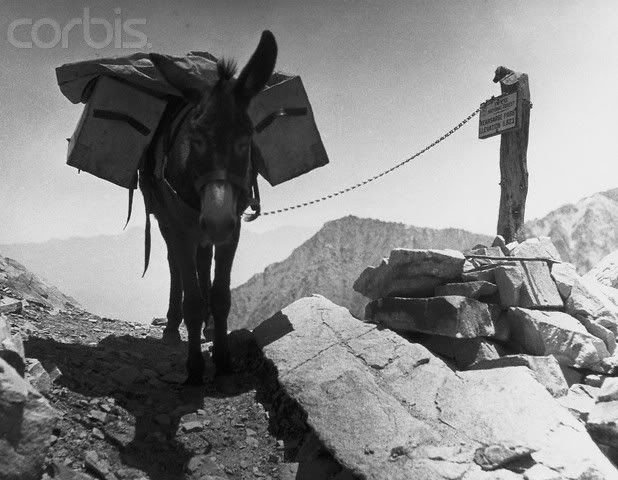Ran into a guy in Acadia National Park using this camera to take a picture of one of those nice stone bridges along the carriage roads. He told me a little bit about the camera.
Exposure time.......this time of day (late afternoon shade), usually about 10 minutes.
Body......cherrry or mohagony (or some other "rich people" wood) taken from Chicago bar tops dismantled during prohibition.
Film......8" x 10" glass plates
Tripod......looked like the size and stregth of three wooden crutches
Print development.......does it himself using old-school techniques
He showed me his photo album that he keeps in his car........as good or better than any of the over-photoshop'ed stuff seen in magazines and calendars.
Humble, friendly, disgustingly talented. True artist.

Exposure time.......this time of day (late afternoon shade), usually about 10 minutes.
Body......cherrry or mohagony (or some other "rich people" wood) taken from Chicago bar tops dismantled during prohibition.
Film......8" x 10" glass plates
Tripod......looked like the size and stregth of three wooden crutches
Print development.......does it himself using old-school techniques
He showed me his photo album that he keeps in his car........as good or better than any of the over-photoshop'ed stuff seen in magazines and calendars.
Humble, friendly, disgustingly talented. True artist.





